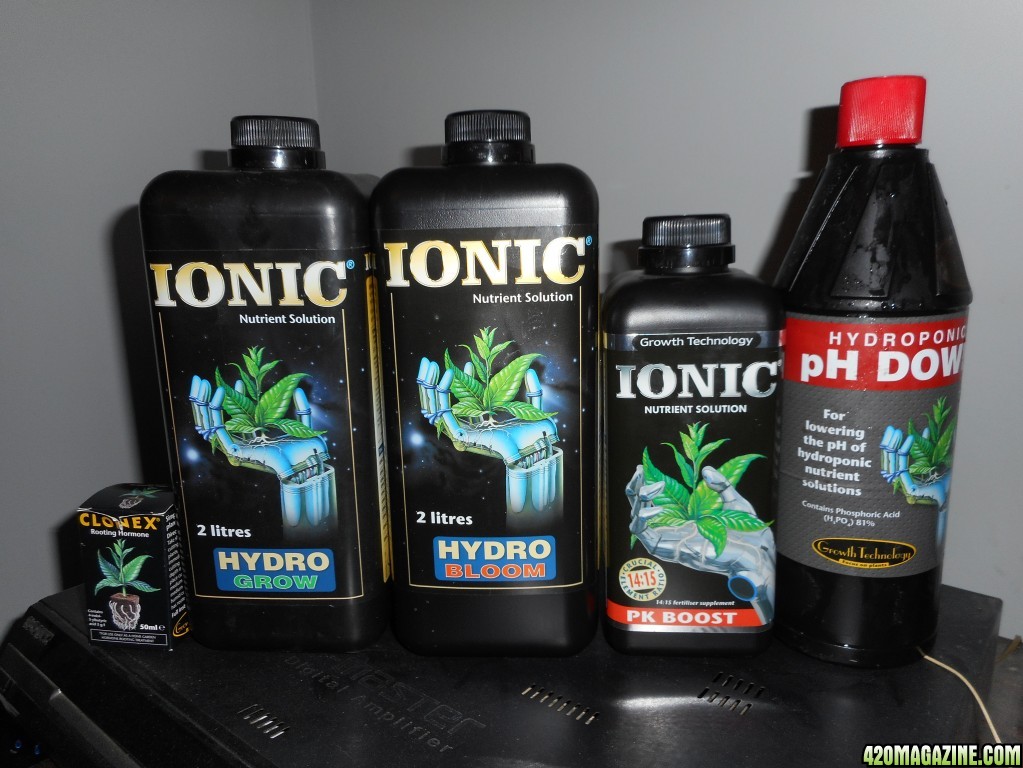Nice update aki, big girl looks amazing!

As far as yum-yum mix, here's a copy/paste from the first page on my indoor journal:

Yum Yum mix by SoilMender:
"Yum Yum Mix is an all-purpose fertilizer and soil conditioner. It is a premium blend of organic and natural alfalfa meal, cottonseed meal, greensand, kelp meal, planters II, rock phosphate, humate and dry molasses. Yum Yum Mix is a rich source of major nutrient elements. Earthworms and soil micro-organisms respond to this natural banquet by breaking down minerals and organic matter into available nutrients for your plants. Yum Yum Mix is natural, organic and completely safe for family, pets, wildlife and everything you grow. It is free of animal products, petrochemicals, and sewage sludge. Vegetarian approved - no blood, no bones. Yum Yum Mix improves soil tilth, moisture retention, plant vigor, and stress resistance. Used regularly, it helps create a balanced pH and a naturally fertile soil. Perfect for growing all annuals, perennials, vegetables, lawns, trees and shrubs.
Ingredient Benefits
Alfalfa Meal: Nitrogen; Vitamins-A, B, E, carotene, thiamine, biotin, pantothenic acid, niacin, riboflavin, folic acid, choline; 16 amino acids, co-enzymes, sugars, starches, protein fiber
Cottonseed Meal: Nitrogen, Phosphorus, Potassium
Kelp Meal: Nitrogen; Potassium; Vitamins-A, B, B2 , C, calcium, pantothenate, niacin, folic acid; minerals-barium, boron, calcium, cobalt, copper, fluorine, iron, magnesium, manganese, molybdenum, nickel, sodium, strontium, sulfur, zinc; 17 amino acids
Greensand: Iron, Potassium, Silicate, Phosphorus, 30 trace elements
Rock Dust: Calcium, Sulfur, Magnesium, Boron, Cobalt
Rock Phosphate: Phosphorus, Calcium, Trace Elements
Humate: Salts of Humic Acid - improve soil characteristics and aids in releasing other nutrients to plants in usable forms
Dry Molasses: Carbohydrates, Sugars, Trace Elements - feeds and attracts beneficial soil organisms
Guaranteed Analysis
Total Nitrogen (N) - 2.0%
Available Phosphate (P2O5) - 1.0%
Soluble Potash (K2O) - 1.0%"




 , but I am a lot more productive sitting at my desk, with a monitor browser tabs setup to flick between my plants. I dont have to jump up and run out to the garage to check on them. In fact, I am going days with out touching them, now that I know I can trust my data points.
, but I am a lot more productive sitting at my desk, with a monitor browser tabs setup to flick between my plants. I dont have to jump up and run out to the garage to check on them. In fact, I am going days with out touching them, now that I know I can trust my data points. I'm a red hat certified engineer if you need any Linux help.
I'm a red hat certified engineer if you need any Linux help. 



